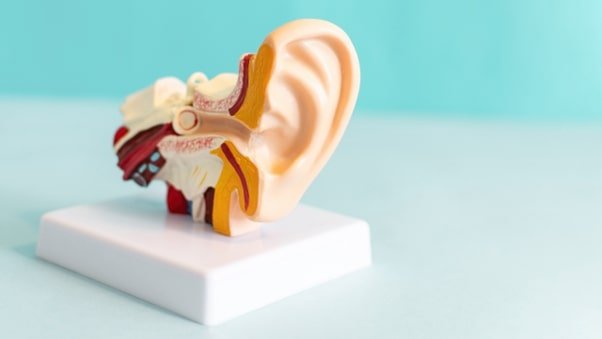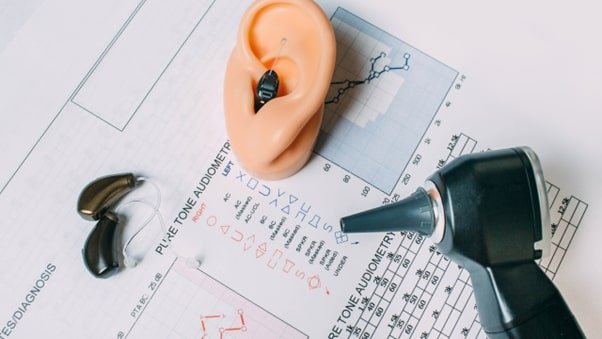Understanding Hearing Loss: Types, Symptoms, Causes, and Treatment

Hearing loss is a common health issue that affects millions of people globally, regardless of age. Whether it’s gradual or sudden, the impact on daily life can be significant, affecting communication, relationships, and even mental well-being.
According to the World Health Organization, over 1.5 billion people live with some degree of hearing loss, and nearly 430 million of them need rehabilitation.
Early detection is crucial because untreated hearing loss can lead to social isolation, cognitive decline, and depression, particularly in older adults. Identifying symptoms early and seeking treatment can vastly improve the quality of life.
This article will explore the different types of hearing loss, from conductive and sensorineural to mixed types, highlighting the symptoms, causes, and the most effective treatment options for managing this condition.
What is Hearing Loss?

Hearing loss is a reduction in the ability to perceive sound, making it difficult for individuals to hear clearly. It can affect one or both ears and may range from mild to profound. This condition can interfere with daily activities such as understanding conversations, especially in noisy environments or listening to television at normal volumes.
The impact on daily life can be significant, often leading to communication challenges, social isolation, and frustration. In older adults, untreated hearing loss is linked to cognitive decline and an increased risk of dementia. Early intervention is key to preventing these long-term effects.
Types of Hearing Loss
Conductive Hearing Loss
Conductive hearing loss happens when there is an issue preventing sound from passing effectively through the outer or middle ear to reach the inner ear. This can result from ear infections, earwax build-up, fluid in the ear, or a perforated eardrum.
Eustachian tube dysfunction is another common cause, especially in children. Treatment depends on the cause and may include surgery, removal of obstructions, or using hearing aids to improve sound transmission.
Sensorineural Hearing Loss
Sensorineural hearing loss occurs when the inner ear (cochlea) or the auditory nerve is damaged. This type of hearing loss can be triggered by factors such as aging, prolonged exposure to loud noise, head trauma, or the use of certain medications. Treatment options for sensorineural hearing loss may include corticosteroids for sudden cases, the use of hearing aids, or cochlear implants in more advanced or severe instances.
Mixed Hearing Loss
Mixed hearing loss involves a combination of conductive and sensorineural hearing loss, impacting both the outer or middle ear as well as the inner ear or auditory nerve. Causes may include a mix of structural and nerve-related problems. Treatment typically begins by addressing the conductive component through surgery or hearing aids, followed by managing the sensorineural issues.
Common Symptoms of Hearing Loss

General Symptoms
Hearing loss can present with several noticeable signs. People often struggle to understand conversations, especially in noisy environments and may feel like others are mumbling. Asking others to repeat themselves becomes frequent, and there is a need to turn up the volume on devices such as televisions or phones. Tinnitus, or ringing in the ears, is another common symptom that can indicate hearing damage.
Symptoms in Children
In children, hearing loss can delay speech development and affect communication. They may not react to loud sounds or their names being called. Unclear speech, frequent “huh” responses, and turning up the volume on devices are also indicators. These symptoms can impact their learning and social interactions, making early detection essential for development.
Causes of Hearing Loss
Conductive Hearing Loss Causes
Conductive hearing loss is typically caused by blockages or damage in the outer or middle ear. Common causes include earwax build-up, infections like otitis media (middle ear infection), fluid accumulation due to allergies or colds, and congenital malformations affecting ear structure. These conditions prevent sound from reaching the inner ear efficiently.
Sensorineural Hearing Loss Causes
Sensorineural hearing loss occurs due to damage to the inner ear or auditory nerve. Aging, known as presbycusis, is a leading cause. Prolonged noise exposure, such as working in noisy environments, and head trauma can also damage the inner ear. Diseases like diabetes and hypertension, along with certain medications (e.g., ototoxic antibiotics), can contribute to nerve-related hearing loss.
Mixed Hearing Loss Causes
Mixed hearing loss arises from a combination of conductive and sensorineural factors. For example, ear infections might coincide with noise-induced damage, leading to both outer and inner ear problems. Addressing both components is crucial for effective treatment.
Diagnosis of Hearing Loss
Importance of Consulting an Audiologist
If you suspect hearing loss, consulting an audiologist is crucial for an accurate diagnosis. Self-diagnosing or delaying professional help can worsen the condition or overlook underlying issues. Audiologists use specialized tools and tests to identify the type and extent of hearing loss, ensuring the right treatment plan is developed.
Common Diagnostic Tests
One of the primary tests is audiometry, which assesses how well you perceive different sounds and frequencies. Tympanometry is another test used to evaluate middle ear function, helping detect blockages or fluid build-up. In certain cases, imaging studies such as CT or MRI scans may be recommended to identify structural abnormalities or damage in the ear, especially if trauma or congenital issues are suspected.
Hearing Loss Treatment Options

Conductive Hearing Loss
Treatment for conductive hearing loss typically involves addressing the underlying cause. Earwax removal or treating infections like otitis media can restore hearing. In cases where structural issues are present, surgery may be necessary to repair perforated eardrums or remove tumors. If surgery is not an option, hearing aids can help improve sound transmission.
Sensorineural Hearing Loss
For sudden sensorineural hearing loss, corticosteroids are often used to reduce inflammation. Progressive sensorineural loss is managed with hearing aids, which amplify sound. For severe cases, cochlear implants are recommended when hearing aids are ineffective. Additionally, medical management may be required for underlying conditions like autoimmune diseases or multiple sclerosis.
Mixed Hearing Loss
Mixed hearing loss requires a combination of treatments to address both conductive and sensorineural issues. Typically, the conductive components are treated first, often through surgery or hearing aids, followed by strategies for managing sensorineural damage.
Preventive Measures
Reducing Exposure to Loud Noise
One of the most effective ways to prevent hearing loss is to reduce exposure to loud noise. Wearing ear protection in noisy environments, such as construction sites or concerts, can prevent noise-induced damage. Limiting the volume on personal devices also helps safeguard your hearing.
Managing Chronic Conditions
Managing chronic conditions like diabetes and hypertension is essential for preventing secondary hearing loss. These conditions can impact blood flow to the inner ear, leading to damage over time. Proper medical management reduces the risk of hearing complications.
Regular Hearing Checks
Regular hearing checks are vital, particularly for older adults or individuals exposed to occupational noise. Early detection of hearing issues allows for timely intervention, potentially slowing progression.
Early Treatment of Ear Conditions
Addressing ear infections and other conditions promptly is critical. Untreated infections or blockages can lead to long-term hearing loss, so early medical treatment is essential for preserving hearing.
Conclusion
It is essential to identify the early signs of hearing loss, like struggling to follow conversations or often needing to ask others to repeat themselves. Timely detection and treatment can prevent further deterioration and improve your overall quality of life. Ignoring these signs may lead to complications like social isolation or cognitive decline, especially in older adults.
Consulting an ENT specialist is essential for a personalized diagnosis and treatment plan. ENT doctors have the expertise to identify the type and cause of hearing loss, recommending the best course of action, whether it involves hearing aids, surgery, or medical treatments.
Visiting an ENT clinic for regular hearing checks is an important preventive step, especially for those at higher risk due to age, occupational noise, or chronic conditions. Timely intervention from an ENT doctor can restore your hearing and balance, helping you maintain an active, connected lifestyle.
Understanding Hearing Loss: Types, Symptoms, Causes, and Treatment Read More »











